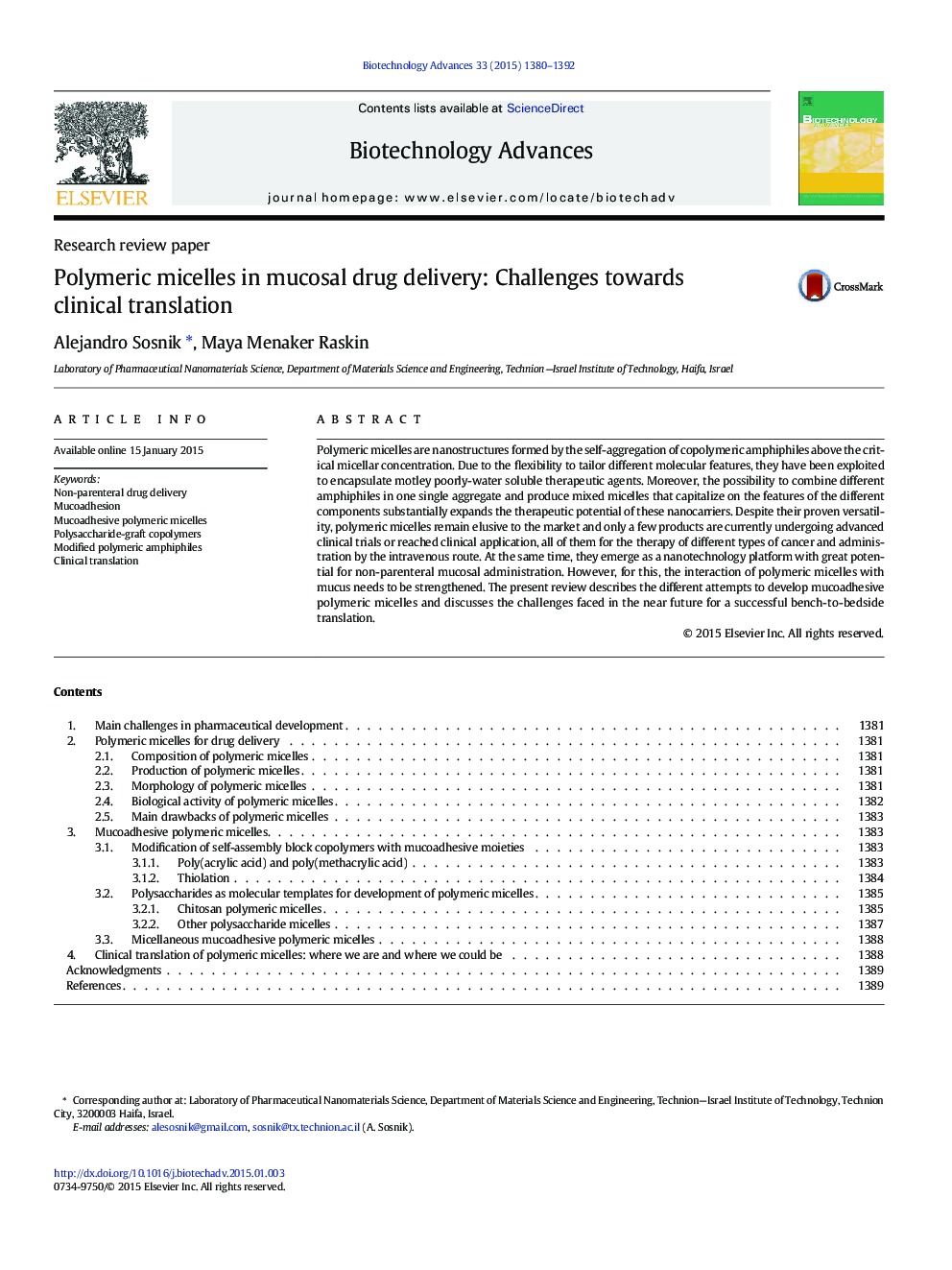| Article ID | Journal | Published Year | Pages | File Type |
|---|---|---|---|---|
| 14230 | Biotechnology Advances | 2015 | 13 Pages |
•Polymeric micelles are a versatile nanotechnology for hydrophobic drug encapsulation.•Development of mucoadhesive polymeric micelles is critical for mucosal routes.•Hydrophobization of polysaccharides is the most extensively studied strategy.•Clinical translation of polymeric micelles has only been done by parenteral routes.
Polymeric micelles are nanostructures formed by the self-aggregation of copolymeric amphiphiles above the critical micellar concentration. Due to the flexibility to tailor different molecular features, they have been exploited to encapsulate motley poorly-water soluble therapeutic agents. Moreover, the possibility to combine different amphiphiles in one single aggregate and produce mixed micelles that capitalize on the features of the different components substantially expands the therapeutic potential of these nanocarriers. Despite their proven versatility, polymeric micelles remain elusive to the market and only a few products are currently undergoing advanced clinical trials or reached clinical application, all of them for the therapy of different types of cancer and administration by the intravenous route. At the same time, they emerge as a nanotechnology platform with great potential for non-parenteral mucosal administration. However, for this, the interaction of polymeric micelles with mucus needs to be strengthened. The present review describes the different attempts to develop mucoadhesive polymeric micelles and discusses the challenges faced in the near future for a successful bench-to-bedside translation.
